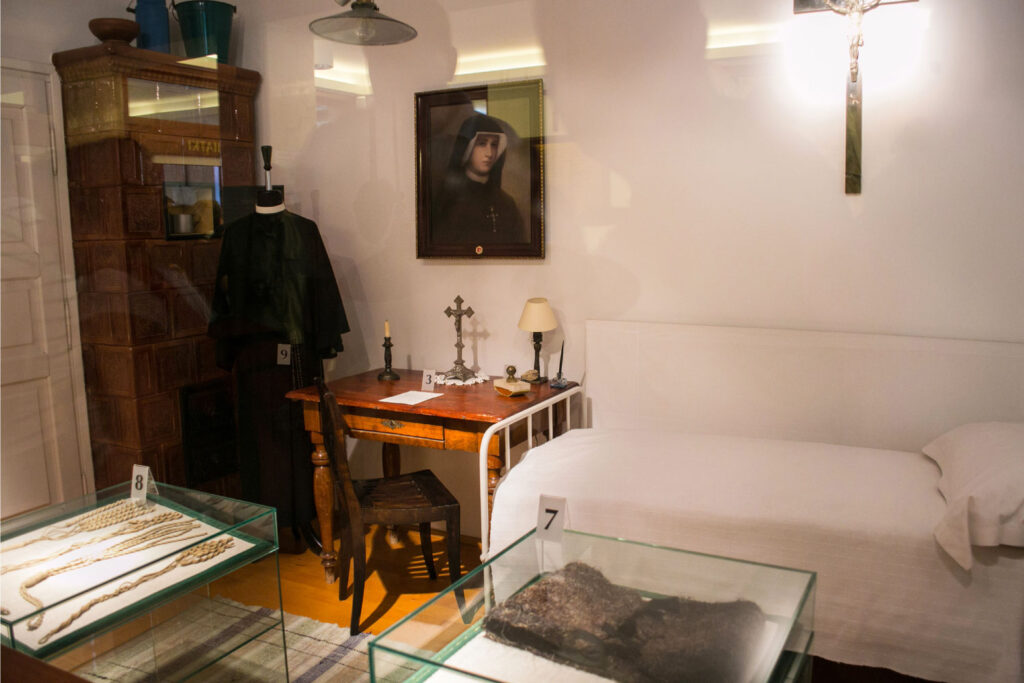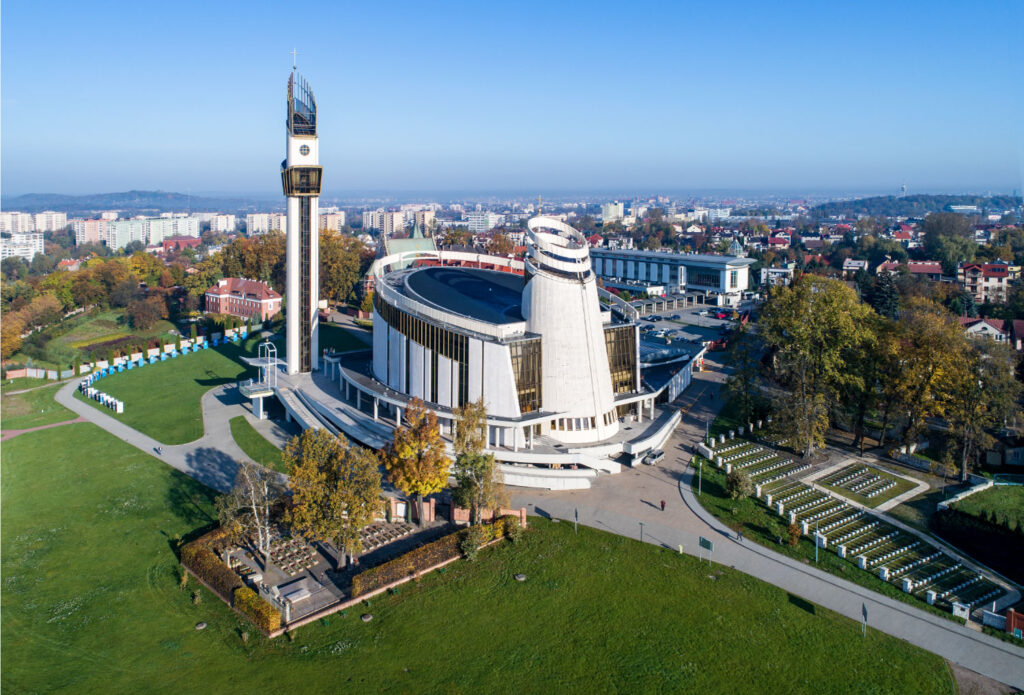St Faustina was born Helena Kowalska in 1905. She was the third of ten children born to Stanislaw Kowalski and Marianna Kowalska. The family was poor but very religious.
Helena first felt her religious calling aged 7 when she attended the Exposition of the Blessed Sacrament. Her parents refused to allow her to join a convent when she finished school, so aged 16, she began working as a housekeeper, earning money to help support her family.
In 1924, whilst at a dance with her sister, Helena experienced her first vision of Jesus. She saw a suffering Jesus and went straight to a Cathedral. Jesus instructed her to leave immediately for Warsaw and join a convent.

Without informing her parents and taking nothing but the clothes she was wearing, the young Helena approached many convents in Warsaw but her impoverished appearance caused them all to turn her away. Eventually, after many weeks, she was accepted by the Mother Superior at the convent of Zgromadzenie Sióstr Matki Boẑej Milosierdzia (Congregation of the Sisters of Our Lady of Mercy). Her acceptance was on the condition that she could pay for her own religious habit so Helena worked as a housemaid, sending money to the convent throughout the year until she had finally paid for her habit and she could enter the convent.

On 30th April 1926, aged 20, Helena received the religious name of Sister Maria Faustina of the Blessed Sacrament. Two years later her parents watched her take her first religious vows as a nun.
Initially Sister Maria Faustina travelled to other convents as a cook but in 1930 she began showing signs of illness and was sent away to rest for several months. On 22 February 1931, having returned to the convent in Plock, Poland, she was visited by Jesus. She wrote in her diary –

“In the evening, when I was in my cell, I became aware of the Lord Jesus clothed in a white garment. One hand was raised in blessing, the other was touching the garment at the breast. From the opening of the garment at the breast there came forth two large rays, one red and the other pale. In silence I gazed intently at the Lord; my soul was overwhelmed with fear but also great joy. After a while Jesus said to me ‘paint an image according to the pattern you see, with the inscription – Jesus, I trust in You’”
Unable to paint, Sister Maria Faustina asked for help at the Plock Convent but help was not forthcoming. It took another three years before the first painting of her visitation was created by Eugene Kazimierowski.

Her February 1931 diary entry went on to say that Jesus explained he wanted the Divine Mercy image to be “solemnly blessed on the first Sunday after Easter; that Sunday is to be the Feast of Mercy.”
In May 1933, now back in Warsaw, she took her final vows and became a perpetual sister of Our Lady of Mercy. Transferring to Vilnius, she met Father Michael Sopocko, the appointed confessor to the nuns. Faustina told him about her conversations with Jesus and his plans for her. Father Sopocko had her evaluated by a psychiatrist, who declared her to be of sound mind, and from then on Father Sopocko supported her religious beliefs. He suggested she keep a diary of her conversations with Jesus (later published posthumously as ‘The Diary of Saint Maria Faustina Kowalska: Divine Mercy In My Soul’).
Sister Maria Faustina continued to receive visitations and instructions from Jesus for the rest of her short life. Nearing her death her visions intensified and she passed away on 5th October 1938 after a couple of years of illness. She currently rests at the Basilica of Divine Mercy in Krakow, Poland. She was beatified on 18th April 1993 and canonised on 30 April 2000. Her feast day is 5th October.

